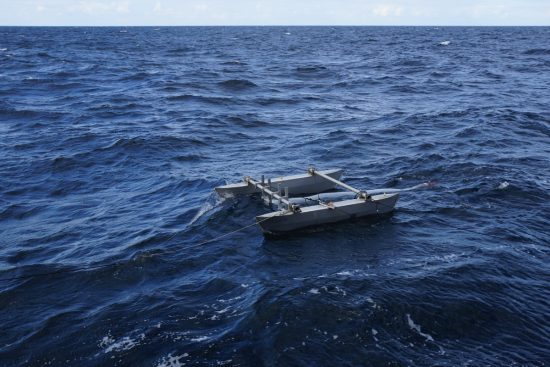





Bacteria population soars when temperatures increase
Rising water temperatures have made it more likely for potentially
pathogenic bacteria to make an appearance in the North and Baltic Seas.
The proliferation of pathogenic bacteria is caused by summer heatwaves
in the vicinity. They comprise bacteria from the genus Vibrios, which
can cause diarrhoeal illness and severe inflammations.
Now, researchers have discovered that such bacteria may have the
ability to survive on microplastic particles. The findings of their
research have recently been published in the Marine Environmental
Research journal.
Dr Gunnar Gerdts, a microbiologist at the Alfred Wegener Institute,
Helmholtz Centre for Polar and Marine Research on Helgoland called them
climate-change winners because their population increases during
heatwaves, especially when the temperature is above 22 degrees Celsius.
This is especially so in the coastal areas of the Baltic Sea, where
heatwaves have been associated with illnesses or deaths caused by the
bacterium Vibrio vulnificus.
Dr Gerdts and his team examined samples from the ocean to determine
whether the bacteria can derive any benefit from the plastisphere. This
is the thin layer of biofilm on the surface of plastic particles where
bacteria, fungi and microalgae can be found. The composition of the
biofilm depends on the condition of the plastic surface and the types
of organisms in the surrounding water. Through gene sequencing, it is
suggested that Vibrios may also be found within this ecosystem.
Through their research, the researchers have proved for the first time
the existence of the Vibrio species in the biofilms on microplastic
particles. During an expedition, they took samples from 62 sampling
stations in the North and Baltic Seas. In addition, a Neuston catamaran
was used to skim off microplastic particles directly below the water
surface. Of the 185 samples collected, evidence of Vibrios was found on
19 of them, mostly in samples from the same sampling stations.
“This illustrates the potential of pathogens hitchhiking on these
particles, i.e. disseminating as free-loaders within an ecosystem and
proliferating beyond,” said Gerdts. His research, however, did not
yield any evidence of pathogenic genotypes.
He is in contact with the authorities on this topic. “At the North and
Baltic Sea coasts, regional investigation offices already spot-check
water samples for Vibrios species. It would be a cause for concern if
microplastic particles ‘charged’ with Vibrios became a regular
occurrence in the future, as biofilms generally have a higher bacterial
density than open water,” he said.
Link to study: http://www.sciencedirect.com/science/article/pii/S014111361630112X
 Herbert
Herbert 28th July 2016
28th July 2016